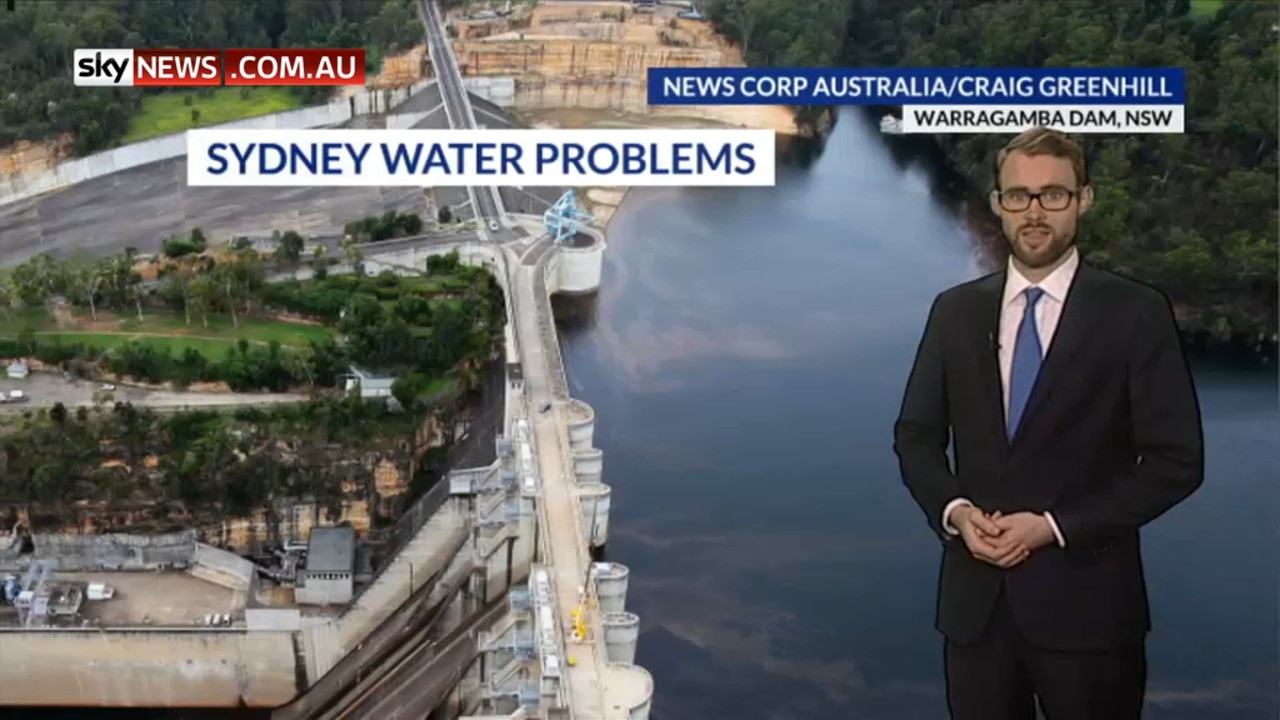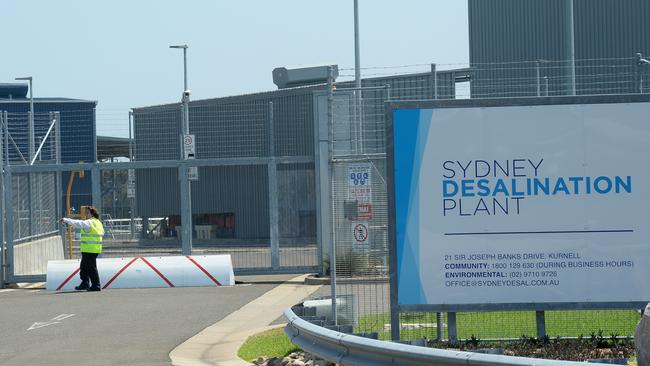Desalination plant to run for next 14 months despite storms adding water to Warragamba Dam
Water levels in Sydney’s dams have risen back up to 60 per cent — ironically within hours of the mothballed $1.8 billion Kurnell desalination plant being switched on under the contract with its private operators.

- Suburbs to benefit from switched on desal plant
- Desal plant gets green light with water bills to rise $35
Water levels in Sydney’s dams have risen back up to 60 per cent — ironically within hours of the mothballed $1.8 billion desalination plant being switched on under the contract with its private operators.
And even if it rains for the next year, the Kurnell plant will keep operating for a minimum of 14 months under the terms of the licence, meaning families will be slugged higher prices regardless of dam levels.
Sunday night’s thunderstorms brought 15mls of extra water to Warragamba Dam, which is now sitting on 62.1 per cent storage capacity, while across the Sydney water catchment area the average storage capacity has returned to 60 per cent after dipping below the figure for just one day.

MORE NEWS
$500k ‘helped save lives’ at ‘extreme risk’ festivals
Bill’s big questions just part of a climate of fear
Margot Robbie and Lady Gaga stun at the SAG Awards
The desal plant turns seawater into freshwater by a process of reverse osmosis and will supply up to 15 per cent of Sydney homes when in full production.
The operators of the privatised utility began the lengthy start up process on Sunday morning when dam levels fell to 59.9 per cent, and predict it will take about three to four months to start pumping freshwater into homes.
New staff have to be hired and pipes disinfected.
As a result, Sydney households will pay an extra $35 a year on average, with larger families hit hardest because the rise includes a 12 cent levy on every kL, or kilo litre of water used, as well as extra water service charges.
A typical house uses 220 kL of water per year and a flat uses 160 kL.


Built in 2007 by the Carr State Government during a drought, the plant only ran between 2010 and 2012 before being put on hold when dam levels rose and was privatised by the Baird Coalition Government in 2012.
Opposition ALP water spokesman Chris Minns said the privatisation was not good value for money.
“There’s no flexibility in the turn on period … under the contract the owners have to turn it on for a set period even if we are inundated with rain,” he said.
“But if the asset was owned by the public, run and operated by Sydney Water, the flexibility would be there to turn off and on as needed.
“I would also say the government is being cute about saying there will be a $35 to $45 increase because all up it’s actually $145 — it’s just that we pay the extra $100 whether the plant is on and off. The increase is just for when it’s turned on.”
WHAT YOU NEED TO KNOW

* When fully operational, the plant will supply residents south of Sydney Harbour and as far west as Parramatta and Bankstown.
* It will produce 250 million litres per day of water — or about 15 per cent of Sydney’s drinking water requirements at maximum capacity.
* The energy-intensive desalination plant also costs more because the original contract stated it had to source 100 per cent of its power from renewable energy, and a wind farm was built at Bungendore near Canberra to cater for it.
* The wind turbines create more energy than required to operate the plant, in order to put spare energy into the national grid to cater for windless days.



